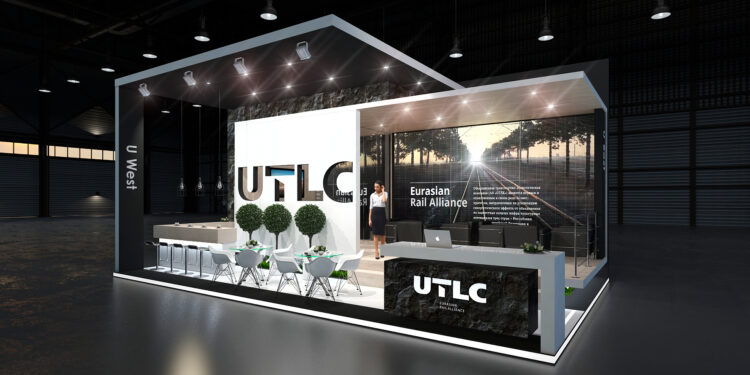The way exhibition stands are designed is changing along with the growing and changing exhibition scene. By 2025, the idea of design will no longer stop at putting up a booth for your company. The aim is to design an experience that keeps your audience involved and enjoying spending time with you.
Businesses look for ways to capture the audience’s interest, touch their hearts, and recount their brand story uniquely. If you’re at an exhibition, you should follow the new trends to develop a stand that draws many people and results in better engagement and leads to generation.
Look at the new exhibition stand design trends that will matter in 2025.
1. Immersive and Interactive Experiences
One of the most significant shifts in 2025 is the move toward interactive and immersive experiences. Attendees want to do more than look. They want to touch, try, and experience.
Features like:
- Virtual and Augmented Reality (VR/AR) demos
- Touch-enabled screens and product selectors
- Gamification elements
- Real-time product customisation experiences
These interactive tools engage visitors, enhance brand recall, and increase dwell time at your booth.
2. Eco-Friendly and Sustainable Designs
Sustainability is more than just a trend. It’s becoming a core value. In 2025, exhibition stand design emphasises:
- Recyclable and reusable materials
- Energy-efficient lighting, such as LEDs
- Digital brochures to replace printed material
- Modular systems that reduce waste across events
Sustainable stands also align your business with environmentally conscious values, appealing to customers and industry partners.
3. Modular and Reusable Structures
Brands want smarter investments, and modular booth designs provide that flexibility. A single modular stand can be:
- Reassembled for different layouts and spaces
- Updated easily with new graphics
- Transported and stored with minimal cost
These systems are ideal for companies participating in multiple events throughout the year, offering versatility without compromising aesthetics.
4. Bold Simplicity and Clean Layouts
Minimalism continues to dominate in 2025. Simple, clean spaces with well-organised layouts are more effective at grabbing attention than cluttered or overly complex stands.
Key design principles include:
- Large visuals with concise messaging
- Neutral backgrounds with a splash of brand colour
- Open space for better visitor flow
- Strategic use of lighting and digital elements
This trend ensures your key messages are clear and the overall experience feels premium and professional.
5. Personalisation at Scale
Visitors want to feel recognised and valued. With technology, booths can offer personalised experiences based on data and visitor behaviour.
Examples include:
- Customised welcome screens
- Personalised product recommendations
- Data capture for tailored follow-ups
- On-the-spot QR code generation for resource sharing
This human-centred design approach improves the visitor experience and helps convert more leads.
6. Digital Integration and Smart Technology
Technology continues to revolutionize how exhibition stands operate. In 2025, digital tools will be fully integrated into booth designs to maximise impact and efficiency.
Popular features include:
- Real-time visitor analytics
- RFID or NFC badges for personalized content
- Live social media displays
- Self-service kiosks and digital catalogs
These tools allow for smarter marketing and enable exhibitors to collect valuable data that can be used for future campaigns.
7. Storytelling Through Design
An exhibition stand should tell your brand story visually and emotionally. Brands use design to guide the visitor’s journey, creating moments of discovery and connection.
This includes:
- Thematic zones that represent brand values
- Mood-setting lights, music, and visuals
- Visual storytelling through motion graphics or video walls
- Guided product walkthroughs and demos
The goal is to move beyond sales pitches and create a memorable narrative that resonates with visitors.
8. Multi-Purpose Meeting Areas
Booths are no longer just for display. They also serve as meeting zones. In 2025, expect to see:
- Private conversation pods
- Coffee corners or lounge areas
- Booked demo zones
- Small presentation stages
Creating a comfortable interaction space helps deepen conversations and makes visitors feel more welcome.
9. Hybrid and Digital-Ready Booths
With virtual events continuing to complement physical ones, hybrid exhibition stands are becoming more common. These stands are designed to serve both in-person and remote audiences.
This includes:
- Live-streaming product demos
- Virtual booth tours
- Downloadable content via QR codes
- Cloud-based visitor interactions
Hybrid stands allow brands to extend their reach beyond the trade show floor.
10. Compact, High-Impact Designs for Smaller Spaces
Not every brand has a large booth area, and that’s okay. In 2025, small booths with prominent personalities are gaining popularity.
These stands focus on:
- Smart vertical space usage
- Multi-functional displays
- Attention-grabbing graphics
- LED walls or rotating product platforms
Even in smaller areas, thoughtful design can make your booth unmissable.
Conclusion
The focus in 2025 will be on standing out, embracing the latest tech, and putting visitors at the heart of the exhibition design. Immersive elements, choosing sustainable materials, or intelligent personalisation are all effective options to help your business be unique and interact meaningfully with your clients.
Hypothesises that companies using these approaches will gain more visitors to their stands, build loyal relationships with customers, and generate better return on investment.
Don’t limit yourself to structure, experience, story, and strategy when preparing for your next exhibition.












